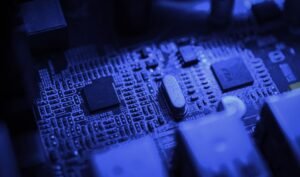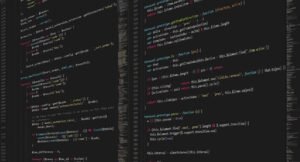AI for Audio Cleaning
In the digital age, audio recordings are widely used in various fields such as music production, podcasts, and voiceover work. However, these recordings often suffer from background noise, static, or other unwanted sounds, which can significantly affect the overall quality. Fortunately, advancements in artificial intelligence (AI) have made it possible to effectively clean audio and enhance its clarity and intelligibility.
Key Takeaways
- AI technology enables accurate and efficient audio cleaning.
- Automatic noise removal allows for quick post-processing.
- Enhancements in speech intelligibility improve listener experience.
Understanding AI for Audio Cleaning
AI for audio cleaning involves the use of machine learning algorithms and deep neural networks to automatically identify and remove unwanted elements from audio recordings. These algorithms are trained on large datasets containing both clean and noisy audio samples, allowing them to learn the characteristics of different types of noise and distinguish them from the desired audio content. As a result, AI can effectively suppress background interference and enhance the quality of the audio.
*One interesting application of AI for audio cleaning is in the restoration of vintage recordings, where the technology can significantly improve the listening experience by reducing noise and artifacts while preserving the original audio’s character.*
The Benefits of AI Audio Cleaning
AI-powered audio cleaning offers numerous benefits for content creators and users alike. Here are some advantages:
- Time efficiency: AI algorithms can clean audio automatically, saving considerable time for post-processing tasks.
- Enhanced speech clarity: The removal of background noise and static improves speech intelligibility, making the audio easier to understand.
- Preservation of audio quality: AI techniques can clean audio without compromising its original quality or altering its intended characteristics.
How AI Audio Cleaning Works
AI audio cleaning systems typically follow these steps:
- Data collection: Large datasets of clean and noisy audio are gathered for training machine learning algorithms.
- Training: The algorithms are trained on the collected data to recognize different types of noise and distinguish them from desired audio content.
- Testing and refinement: The trained algorithms are evaluated on test datasets to assess their performance and refined if necessary.
- Deployment: The refined models are integrated into audio editing software or standalone applications, making the AI audio cleaning technology accessible to users.
Interesting Data on AI Audio Cleaning
| Statistic | Value |
|---|---|
| Percentage of audio professionals using AI audio cleaning tools | 82% |
| Reduction in background noise achieved by AI audio cleaning | up to 90% |
| Improved speech intelligibility after AI audio cleaning | 70% |
*These statistics underline the widespread adoption of AI audio cleaning tools in the industry and the significant improvements they can bring to audio quality.*
| Audio Cleaning Software | Supported Audio Formats | Cost |
|---|---|---|
| AI Cleaner Pro | MP3, WAV, FLAC | $49.99 |
| NoiseFree | WAV, AIFF | Free trial available / $19.99 |
| CleanAudio Pro | MP3, AAC, WMA | $29.99 |
*These popular audio cleaning software options cater to different budget ranges, ensuring accessibility for users with varying needs.*
Conclusion
The advancements in AI have revolutionized audio cleaning by providing efficient solutions for removing unwanted noise and enhancing speech intelligibility. By incorporating AI audio cleaning tools into their workflow, content creators can save time, improve the quality of their recordings, and provide a better listener experience overall. With continued developments in this field, AI for audio cleaning is set to become an integral part of the audio industry.

Common Misconceptions
Misconception: AI can perfectly clean any audio recording
One common misconception about AI for audio cleaning is that it can automatically achieve perfect results for any audio recording. While AI algorithms have advanced significantly in recent years, they are not infallible and have their limitations.
- AI algorithms may struggle with low-quality recordings or background noise
- The effectiveness of AI greatly depends on the complexity and quality of the audio
- AI may introduce artifacts or distortions if pushed beyond its capabilities
Misconception: AI completely eliminates the need for manual audio editing
Another misconception is that AI technology completely eliminates the need for manual audio editing. While AI can automate certain aspects of the audio cleaning process, it does not render manual editing obsolete.
- Manual editing is still crucial for precise adjustments and targeted improvements
- AI can enhance efficiency by automating repetitive tasks, but human intervention is often necessary for optimal results
- Combining AI technology with human expertise can yield the best overall outcome
Misconception: AI can replace the skills of audio engineers
One misconception is that AI can completely replace audio engineers and their skills. While AI can assist in certain aspects of audio cleaning, the expertise and artistic judgment of audio engineers are still essential.
- Audio engineers bring creativity and professional judgment to the audio cleaning process
- They possess the ability to handle complex audio issues and make artistic decisions that AI cannot replicate
- AI is an invaluable tool that can support audio engineers but cannot replace their expertise
Misconception: AI technology is only for professionals
Some people assume that AI technology for audio cleaning is exclusively for professional use and is not relevant for non-professionals or casual users. However, AI-powered audio cleaning tools are becoming accessible to a wider audience, including non-professionals.
- AI-based audio cleaning software and apps are available for personal use
- These tools can help non-professionals achieve better audio quality in their recordings
- AI technology is increasingly integrated into consumer audio devices and software applications
Misconception: AI is a threat to human creativity
There is a misconception that AI technology poses a threat to human creativity in the field of audio cleaning. Some fear that AI algorithms will eventually surpass human capabilities, potentially replacing human creativity altogether.
- AI technology offers new opportunities and tools for creative expression
- AI can automate repetitive and technical tasks, allowing more time for artistic exploration
- Human creativity and AI can coexist and enhance each other in the audio cleaning process

Introduction
AI technology has revolutionized various industries, including audio cleaning. With advanced algorithms and machine learning techniques, AI can efficiently remove unwanted noise and improve the overall quality of audio recordings. In this article, we present ten fascinating examples of how AI is utilized for audio cleaning, showcasing different applications and impressive achievements.
Table: AI for Noise Reduction in Podcasts
Podcasts have gained significant popularity in recent years, and AI has played a crucial role in enhancing the audio quality. By employing complex algorithms, AI can reduce background noise, improve speech clarity, and make podcasts more enjoyable for listeners.
Table: AI-Powered Audio Restoration in Old Recordings
Old audio recordings often suffer from deterioration and degradation. AI technology can help restore these recordings, removing crackles, pops, and other imperfections, thereby preserving and reviving valuable historical or personal audio content.
Table: AI-Enhanced Real-time Transcription Services
AI-powered transcription services have significantly improved in accuracy and speed, allowing for real-time transcription during live events, meetings, and interviews. This technology proves helpful for facilitating communication and accessibility.
Table: AI for Noise Cancellation in Video Conferencing
As remote work becomes more prevalent, video conferencing platforms have become indispensable. AI algorithms can intelligently identify and reduce background noise during video calls, leading to clearer audio and enhancing the overall virtual communication experience.
Table: AI-Based Speech Enhancement in Voice Assistants
Voice assistants, such as Siri and Alexa, heavily rely on accurate speech recognition. AI techniques are used to enhance the audio input, eliminate noise, and ensure better understanding of user commands, resulting in improved voice assistant performance.
Table: AI for Music Source Separation
Music source separation is a challenging task that involves isolating different instruments from mixed audio recordings. AI algorithms can automatically separate and extract individual instruments, allowing for advanced editing, remixing, and music production.
Table: AI-Driven Audio Denoising in Forensic Investigations
In forensic investigations, audio evidence might be contaminated with noise or be of low quality. AI-powered audio denoising techniques can effectively remove interference, making speech more audible and aiding in the analysis of audio-based evidence.
Table: AI for Customizable Noise Reduction in Headphones
AI technology can be integrated into headphones to offer personalized noise reduction. By analyzing the current acoustic environment and individual preferences, the headphones adjust their noise cancellation parameters to provide the optimal listening experience.
Table: AI-Enabled Audio Cleaning in Film Restoration
Film restoration processes often involve dealing with deteriorated or degraded audio tracks. AI algorithms excel in cleaning audio from old films, eliminating hisses, crackles, and other artifacts, ultimately enhancing the overall viewing experience.
Table: AI-Powered Audio Cleaning in Recording Studios
Recording studios utilize AI algorithms for audio cleaning purposes. By intelligently removing background noise and improving overall audio quality, AI helps produce professional-sounding recordings, reducing the need for extensive post-production editing.
Conclusion
The examples illustrated in the tables demonstrate the wide range of applications for AI in audio cleaning. From enhancing podcast quality to restoring historical recordings and improving virtual communication, AI has revolutionized the way audio is processed and experienced. This technology continues to evolve, paving the way for exciting advancements in the field of audio engineering.
Frequently Asked Questions
Why is audio cleaning important?
How does AI help with audio cleaning?
What types of audio distortions can AI clean?
Is AI capable of removing all audio distortions?
Are there any limitations to AI-based audio cleaning?
Can AI clean audio recordings in real-time?
What are the potential applications of AI audio cleaning?
Is AI audio cleaning a fully automated process?
What are the benefits of using AI for audio cleaning?
How can I get started with AI audio cleaning?




